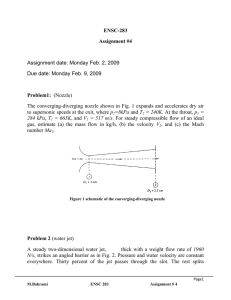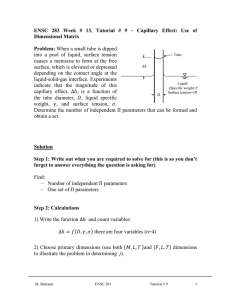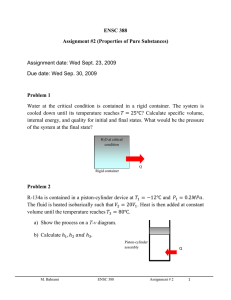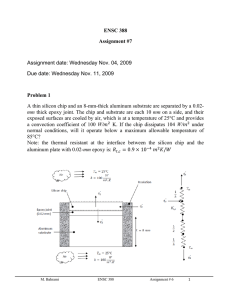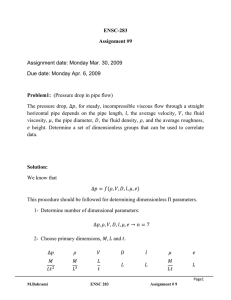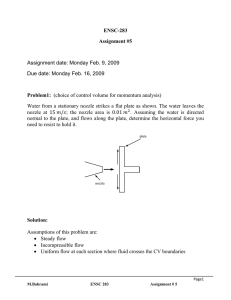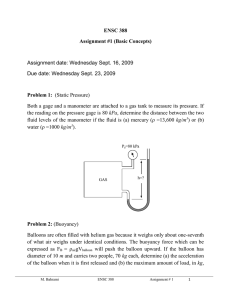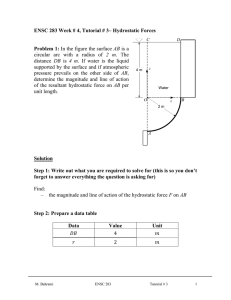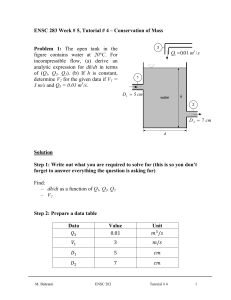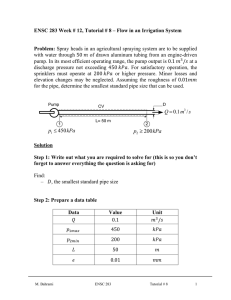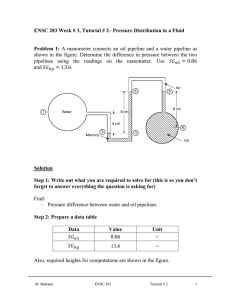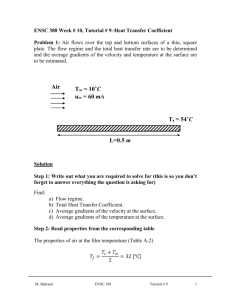ENSC-283 Assignment #4 Problem1:
advertisement
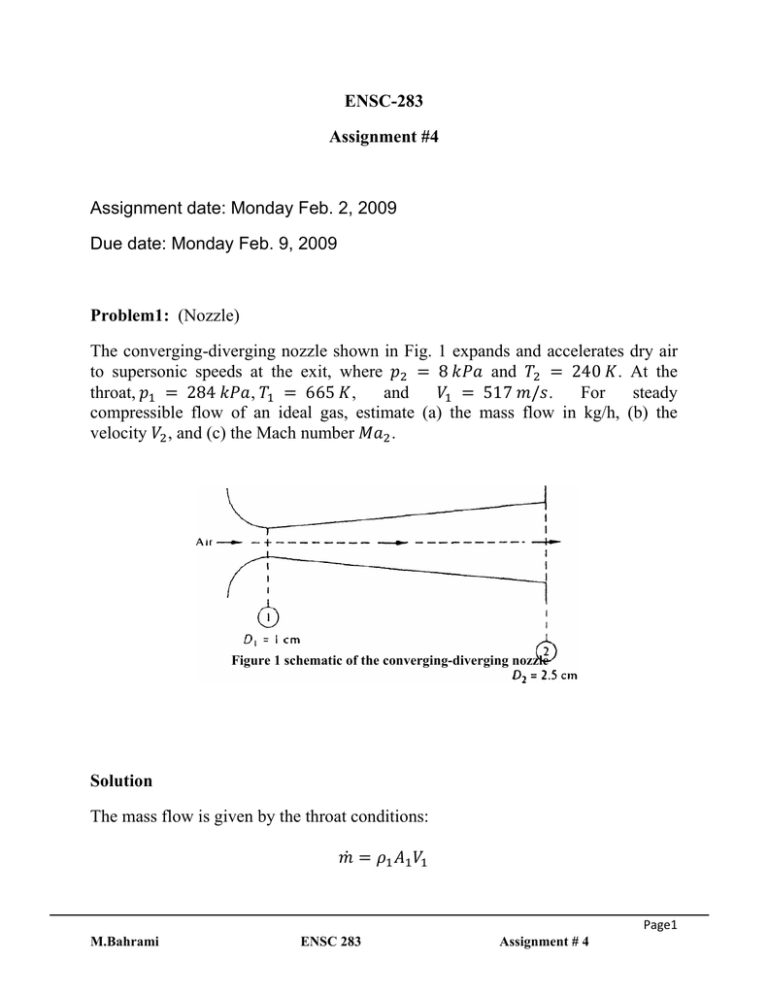
ENSC-283 Assignment #4 Assignment date: Monday Feb. 2, 2009 Due date: Monday Feb. 9, 2009 Problem1: (Nozzle) The converging-diverging nozzle shown in Fig. 1 expands and accelerates dry air to supersonic speeds at the exit, where 8 and 240 . At the 284 , 665 , and 517 / . For steady throat, compressible flow of an ideal gas, estimate (a) the mass flow in kg/h, (b) the . velocity , and (c) the Mach number Figure 1 schematic of the converging-diverging nozzle Solution The mass flow is given by the throat conditions: Page1 M.Bahrami ENSC 283 Assignment # 4 where is the cross-sectional area at point 1. Density of the gas can be obtained from the following equation where 287 / . for air and is in Kelvin. Hence, for point 1, 284000 287 1.3 665 . and mass flow rate is 0.01 4 1.3 517 0.0604 For steady flow, mass flow rate remains constant, hence, therefore 0.0604 8000 287 . 240 0.025 4 Recall that the speed of sound of an ideal gas is where √ Mach number is defined as (what is the unit of Mach number?) 1060 / and At point 2 the Mach number is Page2 M.Bahrami ENSC 283 Assignment # 4 1060 1.4 287 3.14 . 240 Problem 2 (water jet) A steady two-dimensional water jet, 4 thick with a weight flow rate of 1960 / , strikes an angled barrier as in Fig. 2. Pressure and water velocity are constant everywhere. Thirty percent of the jet passes through the slot. The rest splits symmetrically along the barrier. Calculate the horizontal force needed, per unit thickness into the paper, to hold the barrier stationary. Figure 2 schematic of water jet Solution For water take 998 / . The control volume (see figure) cuts through all four jets, which are numbered. The velocity of all jets follows from the weight flow at (1) 1960 9.81 998 5 0.04 1 Page3 M.Bahrami ENSC 283 Assignment # 4 1960 200 9.81 0.3 60 . 0.35 2 . 70 . Then the x-momentum relation for this control volume yields 60 . 5 5 70 5 . 55° 200 55° . 5 70 . 1100 Page4 M.Bahrami ENSC 283 Assignment # 4
